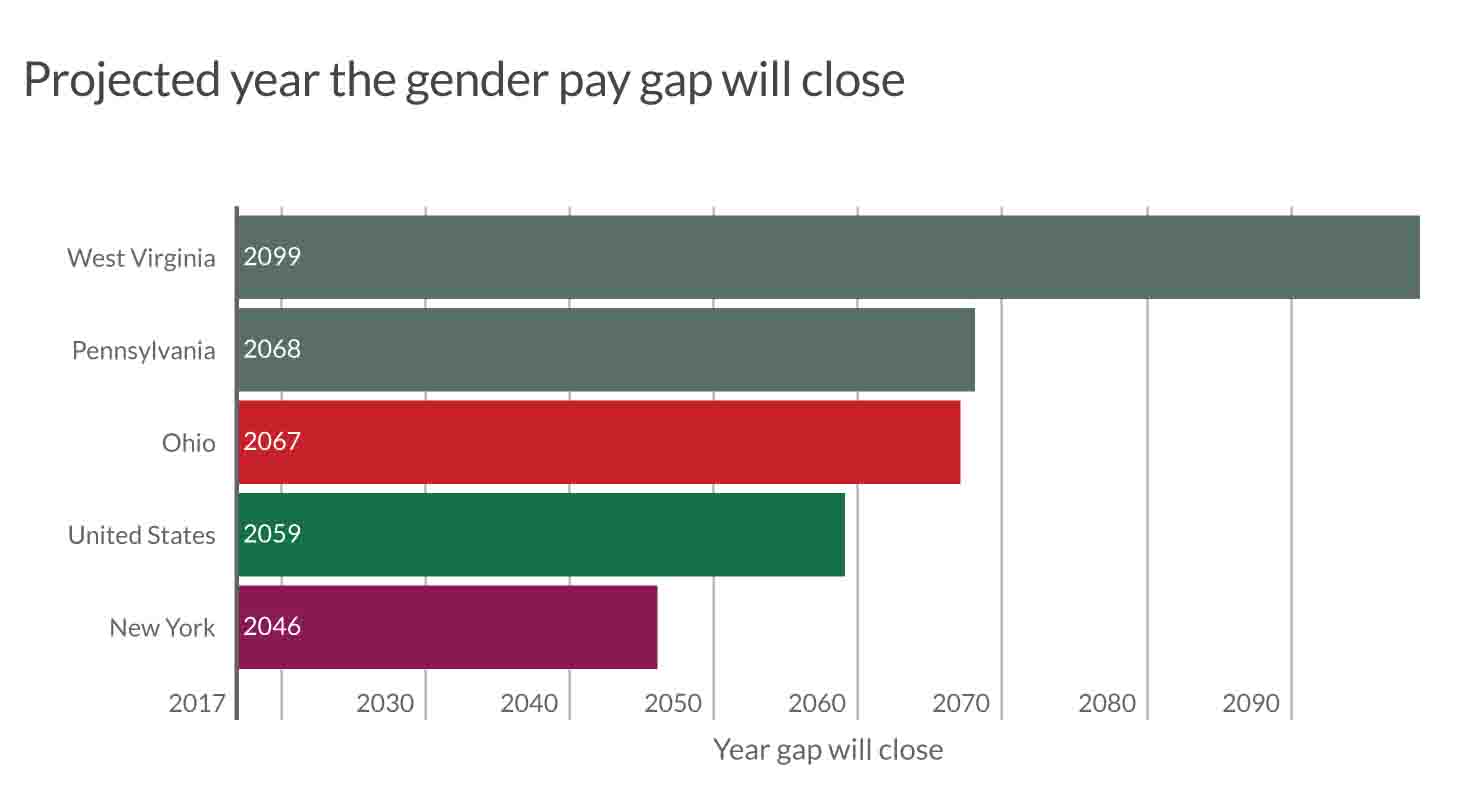Equal pay is just common cents
A girl born in Pennsylvania today will face retirement still receiving less money than a man in the same career. According to the Institute for Women’s Policy Research, in Pennsylvania, the gender wage gap, an average of 20 percent, won’t close until an average 2068, 51 years from now.
According to the Institute for Women’s Policy Research, white women will see equal pay in 2056. This number, however, is much different than the numbers for women of color. Black women will not receive equal pay until 2124, while Hispanic women must wait until 2248.
According to NBC News, in the past year alone, 180 laws protecting women in the workforce have been proposed, yet only seven of these laws have been enacted. Since 2006, Pennsylvania’s wage gap has remained at 78 percent despite the laws being passed.
One of the laws proposed this year, Senate Bill 241, appears to take steps to try and advance equality in the workplace between genders. While there is no doubt that actions need to be taken, a bill like this doesn’t fully support women. This bill fails to strengthen equal-pay regulations and removes other practices that would better protect women.
One major drawback of this bill is that it doesn’t fix the loophole that allows employers to claim that they used factors other than gender when determining wages. This would mean that they could focus on a woman’s prior pay, which was also subject to the wage gap issue.
“Prohibiting salary history in setting wages is a good step [towards helping the wage gap issue]. Basically, women—and the work they do—need to be valued as much as men,” Ms. Michele Leber said. Leber is chair of the National Committee on Pay Equity (NCPE), a coalition of labor unions, women’s and civil rights organizations and legal and education association that has been working to close the national wage gap since 1979.
Employers must be able to prove that their wage decisions are not based on gender. If this is not required, there is no guarantee that women will be seen as equals and get paid the same.
To bring awareness to this issue, an Equal Pay Day takes place every year. This day is determined by finding what day into the next year a woman would finally make the same amount as a man did the previous year. For example, the NCPE would take the average of what men made that previous year. With the wage gap, they would figure out far into the next year women would have to work to make the same amount. This year, Equal Pay Day was on April 4. That meant it took women four months and four days more than men to make the same amount. Equal Pay Day has been a 22-year tradition to help bring awareness to the wage gap issue.
A gap like this shouldn’t take 50 years to close. This gap should’ve closed more than 50 years ago. For a group that makes up half of the workforce, there shouldn’t be discrimination against them.
“I think that there is historical bias in our wage structures, based on the attitude that men work to support families which women work for ‘pin money,’” Leber said.
More regulations and laws must be passed to ensure workplace equality. This could start with the Paycheck Fairness Act. This would require employers to show that wage differences were based on other factors besides gender and would increase penalties for equal pay violation.
“Passing the federal Paycheck Fairness Act, which strengthens and updates the Equal Pay Act of 1963, would help [the wage gap issue],” Leber said.
On a more personal and smaller level, a topic like equality should be a better-received message than it currently is now. That starts with everybody supporting each other, regardless of race, gender and sexuality.
“Women can be more assertive about demanding equal pay and treatment. Women can support other women. Men can support women and women’s equality,” Carol Shafer, an associate professor of performing arts and women’s studies at Penn State Beaver, said.
Women don’t work for pocket and spending money. They work to support their families. It’s time for women to get paid the same as the men in the same field.



